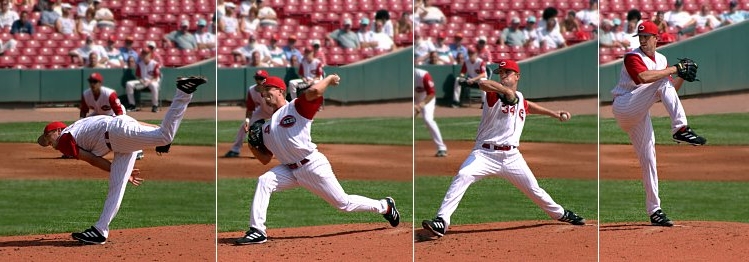Why do pitchers and catchers report to spring training first, anyway?
Some team’s pitchers and catchers report to spring training today, effectively bringing about the end of winter, as every baseball fan knows. Ever since the World Series ended in November, the countdown has been on, and “How many days until pitchers and catchers?” is the question that asks how long it is until that first sign of spring.
It’s a tease, of course, because nobody gets to watch any actual baseball for a couple of weeks, but it’s tradition to get excited about pitchers and catchers. But . . . why? Not why, as in why do people get excited, but why do pitchers and catchers get singled out to report first?
“My guess is that you give the pitchers and catchers a head start so that the pitchers can throw a few times off a mound and are ready to face hitters by the time they arrive,” A’s reliever Sean Doolittle tells Sporting News. “But now that I’m thinking about it that doesn’t make sense. Why not just bring in the position players at the same time for extra BP (and) defense work?”
Josh Zeid will go to camp with the Angels, but he’s another pitcher who can’t say just why he and his compatriots show up earlier than everyone else.
“Well, I’m not exactly sure,” Zeid says. “But I believe it’s because there’s no amount of offseason practice that can duplicate the stress of pitching, on the arm, in front of a lot of fans or coaches or scouts. So they want to get us into that environment as early as possible. It’s their job to keep us healthy, so the most practice we can get in ‘gamelike’ situations, the better.”
These are reasonable explanations, and according to Major League Baseball historian John Thorn, there is something to the idea of pitchers needing extra time to get ready and extra reps — but not just because they’re pitchers.
“The pitcher and the catcher are obviously called the battery, which is named for a piece of artillery that has two parts working together,” Thorn tells SN. “The pitcher and the catcher both probably need to have some kind of training together, in a way that, say, a second baseman and shortstop don’t. The pitcher and catcher relationship is a constant. One might argue that while baseball is a game of nine against nine, at most points in a game, it’s two against one — pitcher and catcher against batter.”
Beyond building a rapport between pitchers and catchers, there is a logistical reason for getting batteries into the flow of camp as quickly as possible.
“(Pitchers) may need some extra time, but there are also more of them,” Thorn says. “So the winnowing process has to begin early. You can’t get as many pitchers into a game, if you’re carrying 30, as you might like. You have to get rid of some non-roster players early — those who were invited on virtually a tryout basis, on minor league contracts. You have more pitchers than you need, and some are, in effect, cannon fodder, because your regular starters can’t give you more than two or three innings for a while. Roster sizes have been 25 for the longest time — since the 1910s. Things were different in spring training between, say, 1886 when it started and the turn of the century. Roster sizes were 15 and teams only required two starters after 1880 and three after 1890. You didn’t get to a four-man rotation until the 20th century. So, the need for an eight- or nine-man pitching staff, even prior to the era of situational relief pitchers, was not yet evident.”
The first mention of “pitchers and catchers” in Sporting News came in 1924. And if you’re looking for the reason that pitchers and catchers became a thing for baseball fans to look forward to through the chill of winter, yes, it’s the media.
“It’s a fairly recent thing, the idea that we’re counting down to spring, and baseball fans having such a huge attachment to spring training,” Thorn says. “It was not always that way. You didn’t have spring training games available on radio or television until the ‘40s, so whatever they did down south or out west came to you by wire, a day or two later. The attachment to spring training has increased with the immediacy of reporting.”
Article Written By: Jesse Spector
0

